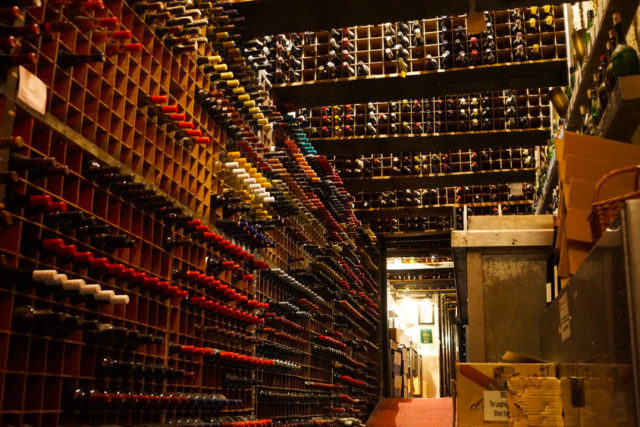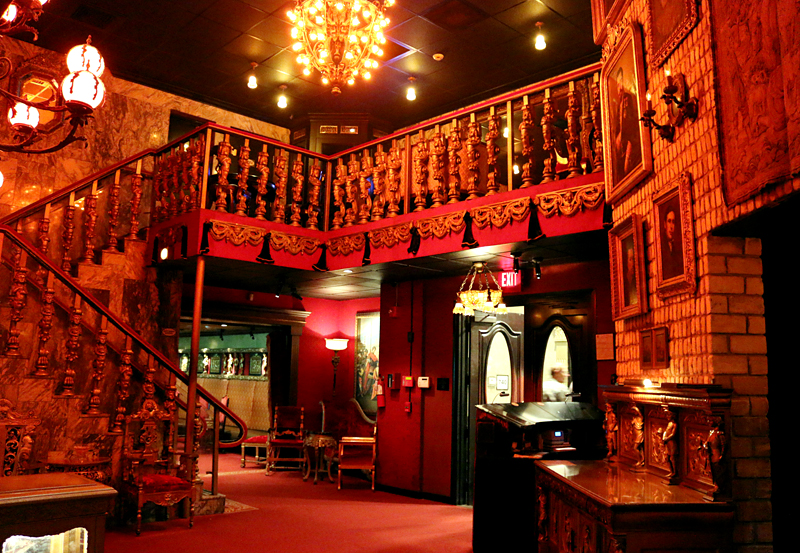
The Art of the Meal – Bern’s Steakhouse
Bern’s Steak House in Tampa, Florida is one of the most iconic restaurants in the United States. It’s legendary for its quality (they have their own produce farm and dry age their own steaks between 5 and 8 weeks), its wine list (rumored to be around 750,000 bottles, though no one knows for sure), and for its founder, Bern Laxer (rumored to have managed to have a train make an unscheduled stop in Tampa at 2AM so he could offload one of his many wine shipments). Many writers have discussed the storied history of Bern’s. Bern’s is a must-go destination for those interested in a real education of what perfectly cellared wine can evolve into as it ages.
My first visit to Bern’s was in 2014. At the time, they were pouring 1979 Cornas by the glass for a pittance of $6 per glass. When I asked where they came across this novelty, I was informed they “found it” in a tucked away corner of one of their massive cellars (this thing can happen when one has three quarters of a million bottles of wine lying around). Wine culture permeates the restaurant and there is something for just about everyone: 60 year old Bordeaux, yes sir; recent Napa Cabernet, you bet; 100 year old Madeira, there’s 50+ selections and they’ve got a whole room upstairs dedicated to what one can generally be classified as “dessert wines”. At this point, the only limitation is that it has been discovered by the nation’s wine geeks who inevitably make the pilgrimage and invariably get the last bottle of something or another.
The sommelier I have worked with is Brad Dixon. He possesses a wealth of information about what is available in the cellar and when given proper notice, never fails to find something that I especially would find compelling. He, like the rest of the staff, is extremely courteous and unobtrusive, making this an ideal spot for novices and savvy collectors alike.
The meal was outstanding and alone worth the trek. Here are some notes on the wines.
1981 Adolf Rheinart Riesling Ockfener Herrenberg Kabinet – served with stone crabs. A deep golden hue in the glass, it initially showed signs of oxidation. This blew off almost immediately to offer aromas of nectarine and honey. The palate was pleasantly rich and balanced with acidity. It continued to develop over the course of an hour, gaining in richness. It is probably just past its prime, it still has plenty of life left.
1953 Chateau Leoville Las Cases St. Julien – Definitely past its prime, but still an amazing piece of history and pleasant to drink (not bad for being 65 years old!). The fruit on the palate was largely dried up, leaving a disproportionately bright acidity, however it was paired with a rich steak meal and was surprisingly refreshing. All that said, the aromatics are simply gorgeous. Dried red currant, hints of truffle, tea leaves and allspice all make an appearance. This is a charming wine and well worth indulging in if the occasion arrises.
1980 Clos des Papes Chateauneuf du Pape – Not having had much experience with older Rhone wines, I was surprised to note how young this wine tasted! Plenty of dark fruit was well balanced with acidity and notes of garrigue that one finds in more recent vintages of CdP. This was all the more surprising since 1980 is not considered a great vintage by….well, by anyone. This suggests that provenance is the name of the game. The bottle had been kept in Bern’s cellar since release. It also suggests you can’t believe everything you read.
A very generous collector at the next table was kind enough to share a taste of a few of the bottles he had on his table. These two notes should be taken with a grain of salt as they represent a snapshot of the wine as I wasn’t in a position to see how they evolved in the glass over time.
1988 Domaine de la Romanee Conti Echezeaux Grand Cru – Ruby colored in the glass, it offered aromas of fresh red and dark berries. Very pleasant on the palate, but surprisingly tannic given its age. This isn’t to say it was unpleasant; far from it. I’m sure it was divine with their meal
1985 Chateau Pichon-Longueville, Comtesse de Lalande Pauillac – This is a fully mature wine that is beginning to show animalistic notes both on the nose and on the palate. The tannins are firmer than one would expect, and left me undecided if it was still evolving in a positive direction in the bottle or beginning a long, slow decline. The fruit was largely replaced with tertiary mushroom notes. It will certainly be kicking for another decade or two, but whether or not it will be pleasant to drink is another question altogether.
Leave a Comment